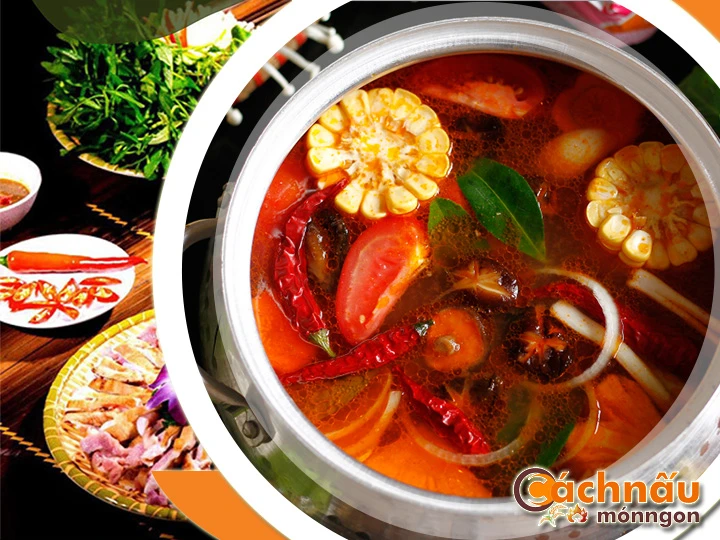Try the Ultimate Rabbit Hot Pot Secrets at Home - Lẩu thỏ
Try the Ultimate Rabbit Hot Pot Secrets at Home - Lẩu thỏ
Blog Article
Hot pot rabbit, a yummy and gastronomic treasure, has been valued across global culinary styles for centuries.

This comprehensive guide explores the sum of all parts you need to be aware of about rabbit hot pot, from its historical background to modern variations, nutritional benefits, and comprehensive walkthrough for creating the excellent dining option at home. Whether you are a experienced cook or a curious beginner, this guide will empower and educate you to achieve expertise of rabbit hot pot.
DIVING INTO THE BACKGROUND ALONG WITH HERITAGE RELATED TO {BRAISED RABBIT DISH|HEARTY RABBIT MEAL|RABBIT HOT POT|RABBIT STEW|BUNNY CASSEROLE|RABBIT CUISINE|STEWED RABBIT
Rabbit hot pot serves as a special and heritage-rich dish with significant customs in multiple countries. Its popularity stems not only from its savory flavor but also from its legacy and traditions.
Rabbit hot pot serves as a distinctive and heritage-rich dish with rich cultural connections in diverse locales. Its appeal stems not only from its savory flavor but also from its past and cultural importance.
- The Start: Rabbit casserole came from villages where rabbit meat were a common, sustaining food source. In traditional Chinese culture, it was a household staple, particularly during important events.
- Spread Through Regions: In Western regions like Germany, rabbit was traditionally used in soups, adapting into modern versions of contemporary hot pots as the dish rose in worldwide popularity.
2. Hearty Rabbit Meal in East Asia's Customs.
- In China: Known as 兔肉火锅 (Tù ròu huǒguō), rabbit hot pot is an essential part of spicy Sichuan cuisine, celebrated for its pungent flavors and cherished at festive occasions.
- In Korea and Japan: While not as popular, rabbit hot pot is sometimes made as a medicinal dish in South Korea, or borrowing ideas from nabemono hot pot in Japan, incorporating local plants and condiments.
- Throughout Vietnam: Although rabbit hot pot is not a regular meal, it is celebrated during festive events or in countryside where rabbit meat is commonly found. It is often prepared with distinctive spices such as fresh lemongrass, aromatic ginger, and fiery chili, paired with fresh vegetables like kangkong, green mustard, or sensitive plant. This dish is favored for its unique flavor and wholesome qualities, frequently shared at gatherings with friends or family.
Ở Việt Nam, tuy không phổ biến là món ăn thịnh hành hằng ngày, nhưng thường thấy trong những ngày quan trọng hoặc ở những nơi hẻo lánh, nơi dễ dàng tìm thấy thỏ. Thường được chế biến với mùi thơm từ sả, gừng tươi, và ớt tươi, kết hợp với rau sạch như rau muống. Món ăn này rất phổ biến nhờ mùi vị khác lạ và nhiều giá trị dinh dưỡng, thường xuất hiện trong những buổi hội họp.
3. Braised Bunny Dish in European Cuisine.
- Throughout France: Traditionally served as a warming meal with a red wine base, seasoning herbs like rosemary, and earthy roots. Rabbit hot pot is a culinary staple for family reunions.
- Within Italy: The dish “Cacciatore”, featuring rabbit simmered with wine and tomatoes, is a inspiration for contemporary rabbit hot pot variations.
MASTERING RABBIT HOT POT: RECIPES AND METHODS
Rabbit hot pot is a flexible dish that combines seasonal ingredients, aromatic broths, and distinct techniques to create a filling and flavorful experience. Below are key steps into the core recipes and methods to master rabbit hot pot.
The Fundamental Recipe for Rabbit Hot Pot
* Required Ingredients:
- 1 whole rabbit (cut into pieces)
- 4 cups of broth (vegetable)
- Vegetables (mushrooms)
- Spices and herbs (garlic)
- Seasonings (pepper)
- Optional: rice for serving
* Method:
- Getting the Rabbit Ready: Clean and chop the rabbit into pieces. Marinate with a pinch of salt, black pepper, and a drizzle of soy sauce for half an hour to enrich the flavor.
- Prepare the Broth: Heat a pot with a bit of oil. Sauté minced garlic and sliced ginger until fragrant. Add your choice of broth and bring it to a boil.
- Simmer the Rabbit: Add the rabbit pieces into the pot and let them gently boil on low heat for 30-40 minutes until tender.
- Add Vegetables: Add your chosen vegetables and cook until they are softened but still bright.
- Plate Up: Transfer the hot pot to a serving dish. Serve with side dishes and add-ons such as rice or noodles.
Mastering Rabbit Hot Pot Techniques
- Marination:
. Marinate the rabbit with a mixture of salt, pepper, and seasonings to amplify its natural flavor.
. For more richness, use wine or a mix of fresh herbs like rosemary and thyme.
- Building Layers of Flavor:
. Start by simmering the rabbit in the broth to draw out lẩu thỏ đơn giản its rich flavor.
. Gradually add vegetables based on their required time.
- Perfect Timing:
. Avoid cooking too long the rabbit, as it can lose tenderness.
. Test for doneness by checking if the meat easily separates from the bone.
- Taste Customization:
. Perfect the flavor by adding more spices as needed.
. Experiment with different flavor profiles, such as creamy European-inspired variations.
Pro Tips for Rabbit Hot Pot
- Quality Matters: Always choose high-quality rabbit and farm-fresh produce for the top flavor.
- Achieve Harmony: Be attentive of the spiciness in the broth. Try and tweak frequently during cooking.
- Dipping Sauces: Offer a variety of sauces like spicy garlic dip or soy-based dips to elevate the dining experience.
- Presentation: Use a portable stove or serve the hot pot at the center of the table to promote sharing.
By perfecting these recipes and techniques, you can make a rabbit hot pot that’s tasty and beautifully presented, ensuring it becomes a standout dish for any celebration or occasion.
Report this page